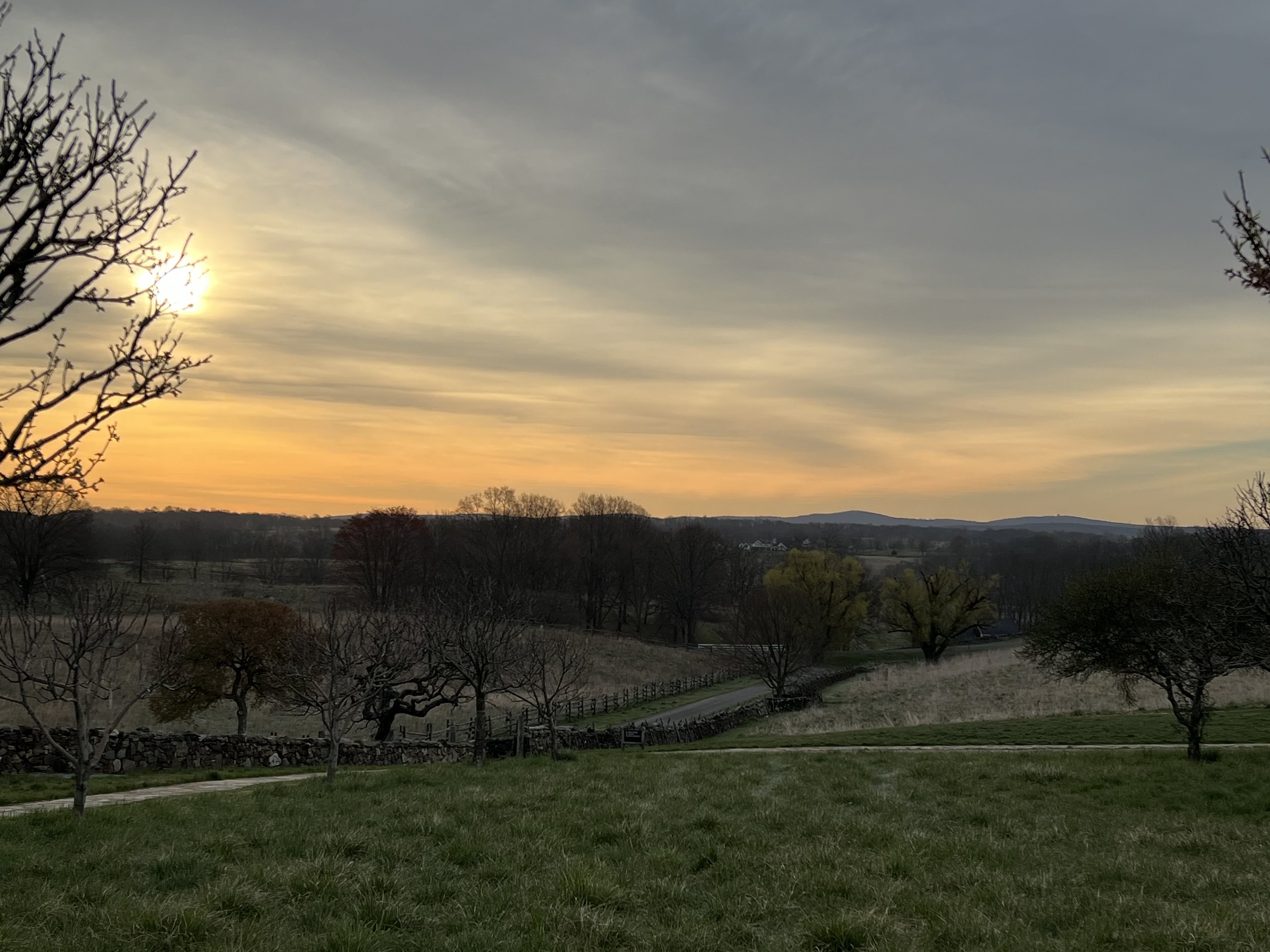Borrowed Scenery
Claire Quinn
In this blog series, Oak Spring’s interns and apprentices share their stories of working and learning in our gardens, fields, forests and farm. This post was written by our 2024 Horticultural Apprentice, Claire Quinn.
In my first few months as a horticulture apprentice, I often found myself gazing up at the mountains that surround the garden at Oak Spring. They are visible at almost every place on the property for it is located in the foothills of the Appalachians and has the Blue Ridge and Bull Run Mountains that stretch along either side of the Little Oak Spring. In the mornings, the Blue Ridge mountains are layered shades of blue and in the evening the Bull Run mountains are set in front of the most beautiful sunsets.
While standing on the path that leads to the formal greenhouse, it’s almost impossible to sense where the property ends. The formal garden is enclosed by a white wall, while the mountains loom over the top edge, creating a separation between the formal garden and the rest of the landscape. The views of the mountains change the way the garden feels, as though the mountains are the walls of the property.
Shakkei (借景), which translates to borrowed scenery, is an ancient design technique that originated in East Asia. The term originated in China and is used in the 17th century treatise Yuanye which translates to garden forge. Written by Ji Cheng, the treatise breaks borrowed scenery down into four categories: yuanjie (distant borrowing, 遠借), linjie (adjacent borrowing, 隣借), yangie (upward borrowing, 仰借), and fujie (downward borrowing, 俯借). The goal of borrowed scenery is to observe the broader landscape vistas and incorporate certain elements from it into a garden’s overall design. This philosophy of creating a harmonious relationship between the landscape and the garden can be attributed to earlier Taoist and Buddhist thinking. Another aspect of garden design further expanded on by Cheng was the emphasis of involving the heart as part of the artistic creation of garden scenes.
Certainly heart, amongst many other sources drove Mrs. Mellon during the time of the construction of the residence at Little Oak Spring and her gardens. It is known that during the construction of her and Paul’s family home at Oak Spring, Bunny spent time gazing through each gap where windows were to be installed, to ensure each one had the most appropriate view of the landscape, weather it was the hilly pastures, mountains, or specific tree, depending on which side of the house the window faced. It’s also known that Bunny directed certain hills to be flattened or mounded up to ensure a seamless view across the landscape.
When looking at the gardens of Bunny Mellon, one can see her intentional construction and incorporation of the landscape first hand, though she most likely did not design with shakkei in mind and rather was inspired by other French design techniques that focused on symmetry and imposing order on nature. Regardless, she seamlessly blended the existing features of the landscape into her landscape design, and harbored the spirit of shakkei.
Banner photo by Roger Foley. All other photos by Claire Quinn.




